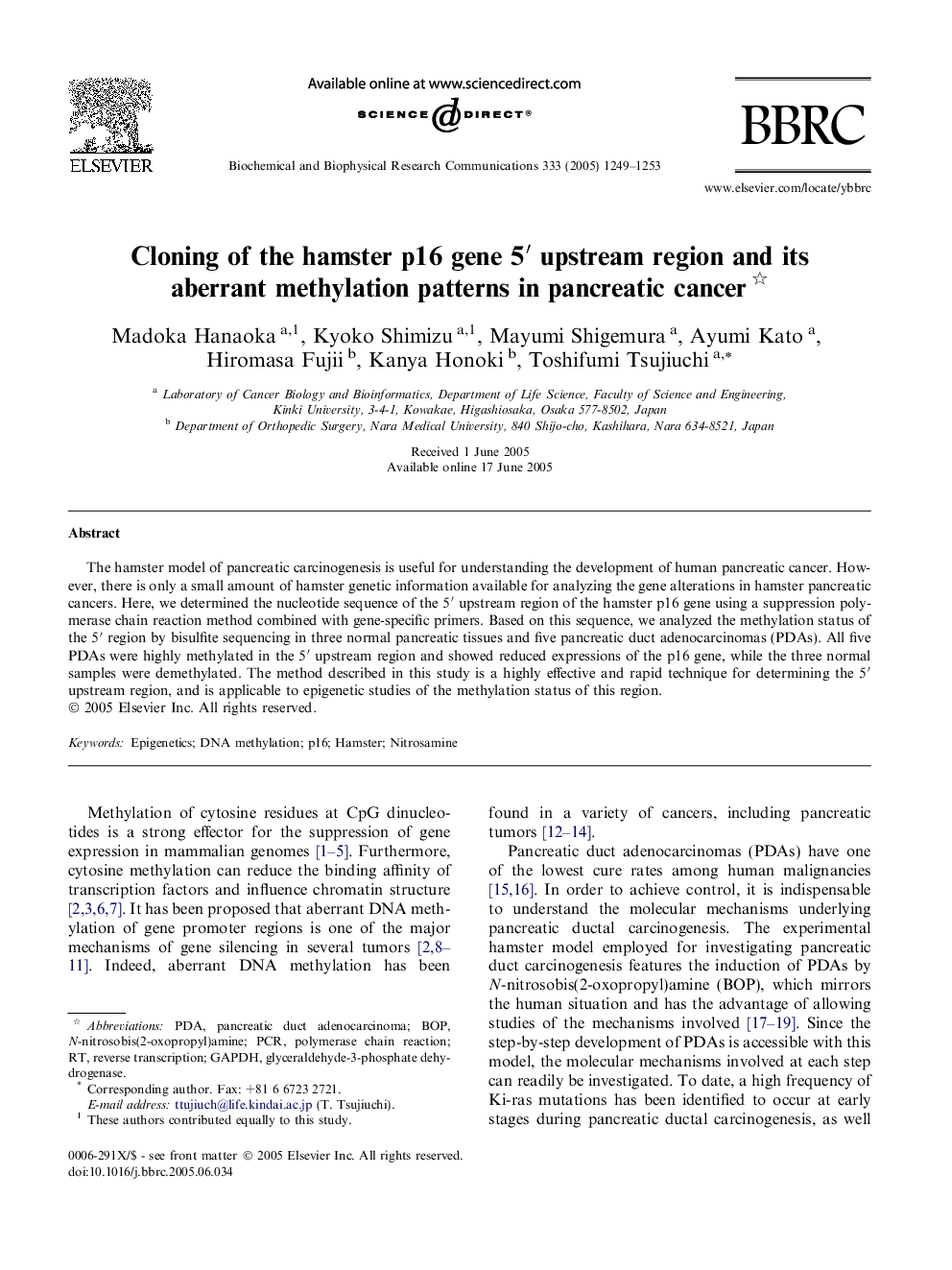| Article ID | Journal | Published Year | Pages | File Type |
|---|---|---|---|---|
| 10768580 | Biochemical and Biophysical Research Communications | 2005 | 5 Pages |
Abstract
The hamster model of pancreatic carcinogenesis is useful for understanding the development of human pancreatic cancer. However, there is only a small amount of hamster genetic information available for analyzing the gene alterations in hamster pancreatic cancers. Here, we determined the nucleotide sequence of the 5â² upstream region of the hamster p16 gene using a suppression polymerase chain reaction method combined with gene-specific primers. Based on this sequence, we analyzed the methylation status of the 5â² region by bisulfite sequencing in three normal pancreatic tissues and five pancreatic duct adenocarcinomas (PDAs). All five PDAs were highly methylated in the 5â² upstream region and showed reduced expressions of the p16 gene, while the three normal samples were demethylated. The method described in this study is a highly effective and rapid technique for determining the 5â² upstream region, and is applicable to epigenetic studies of the methylation status of this region.
Related Topics
Life Sciences
Biochemistry, Genetics and Molecular Biology
Biochemistry
Authors
Madoka Hanaoka, Kyoko Shimizu, Mayumi Shigemura, Ayumi Kato, Hiromasa Fujii, Kanya Honoki, Toshifumi Tsujiuchi,
